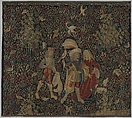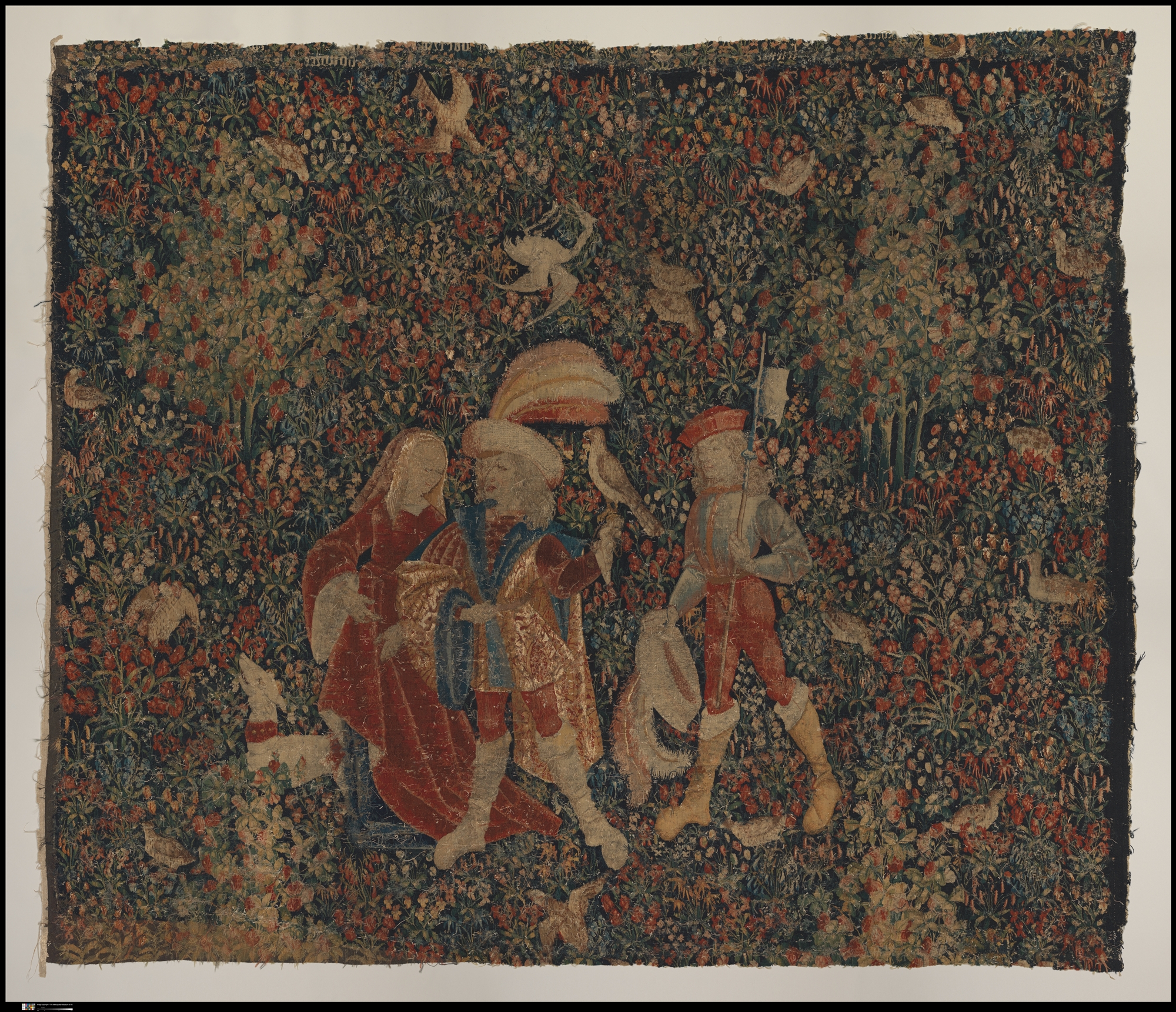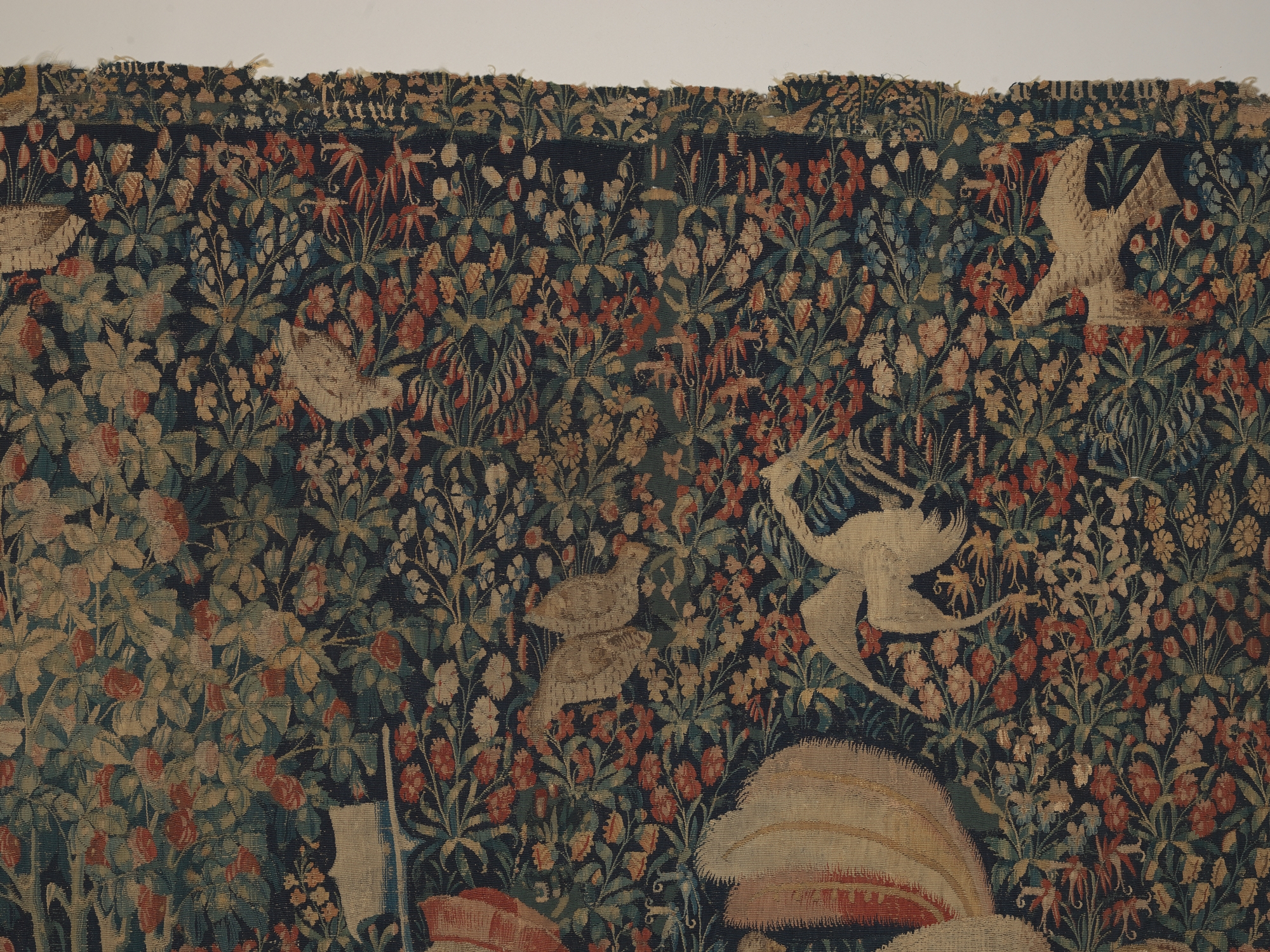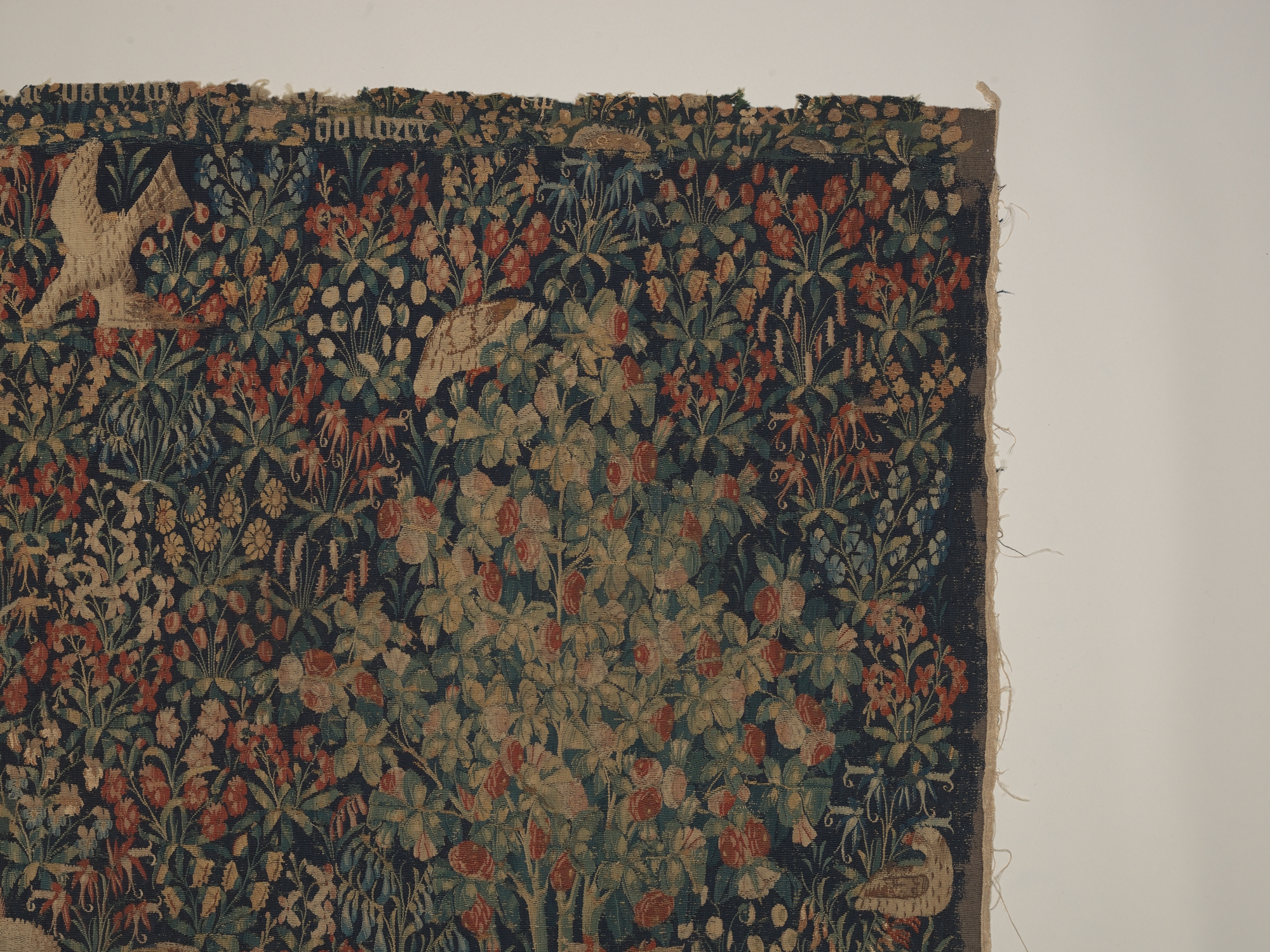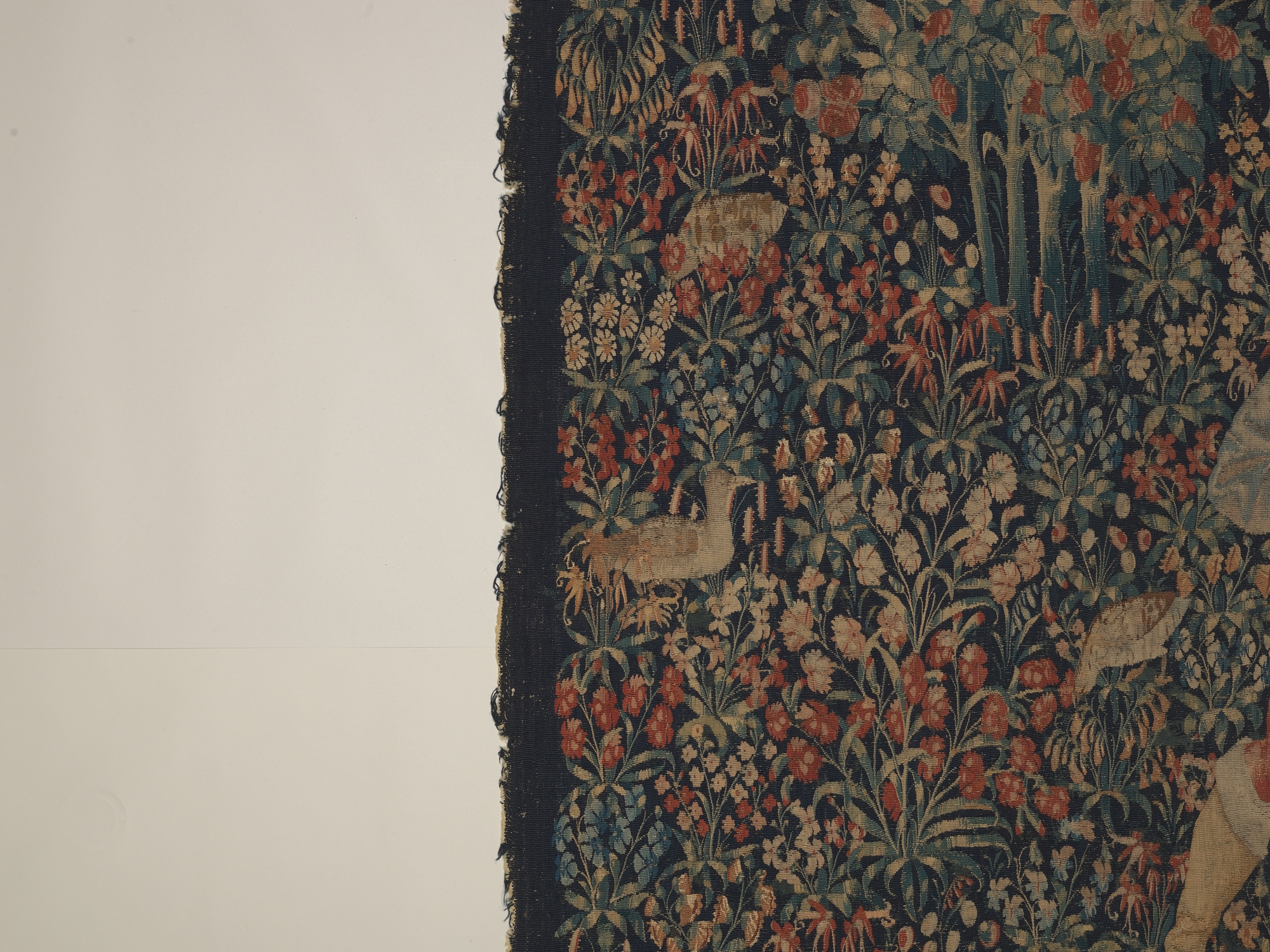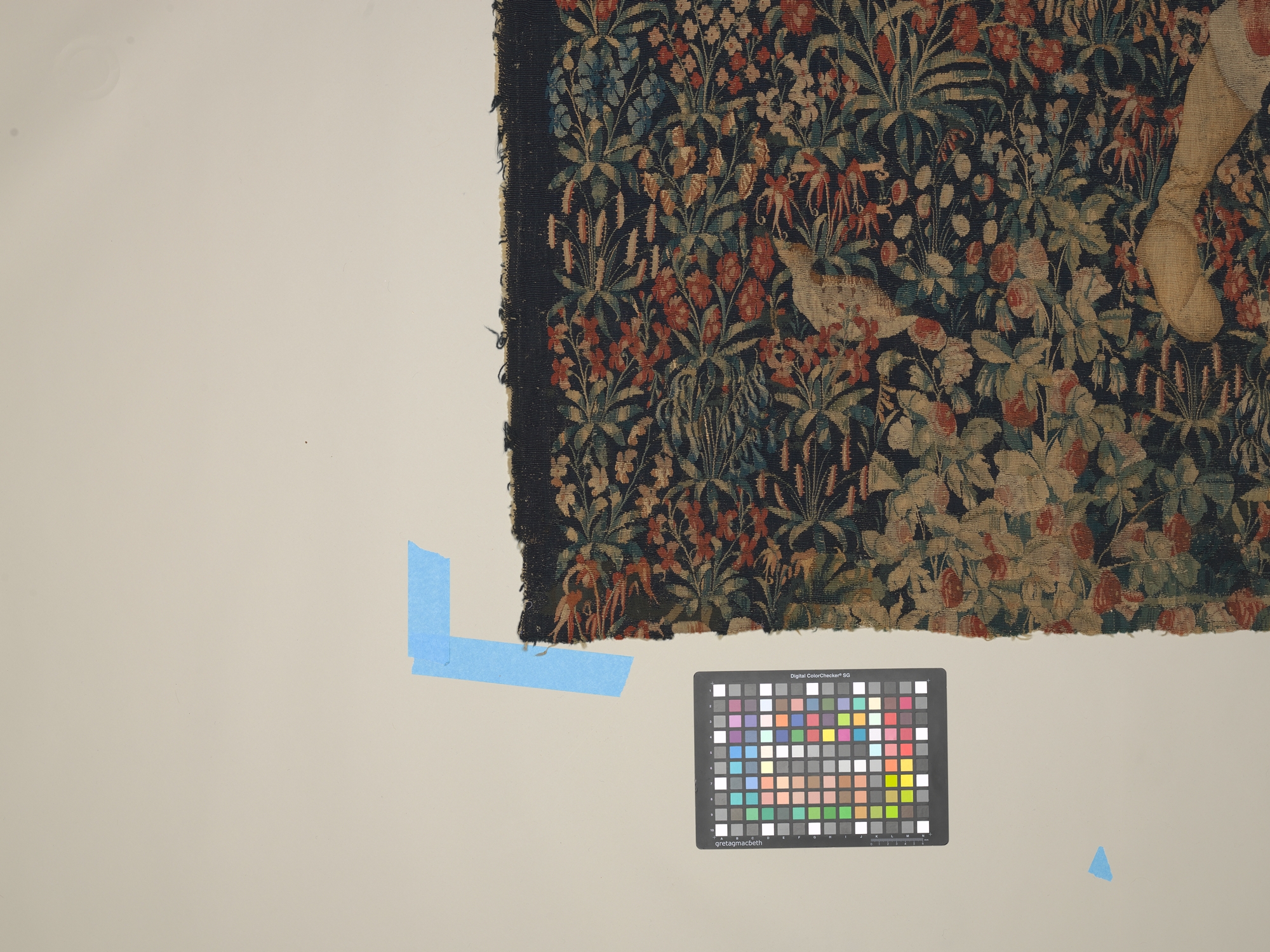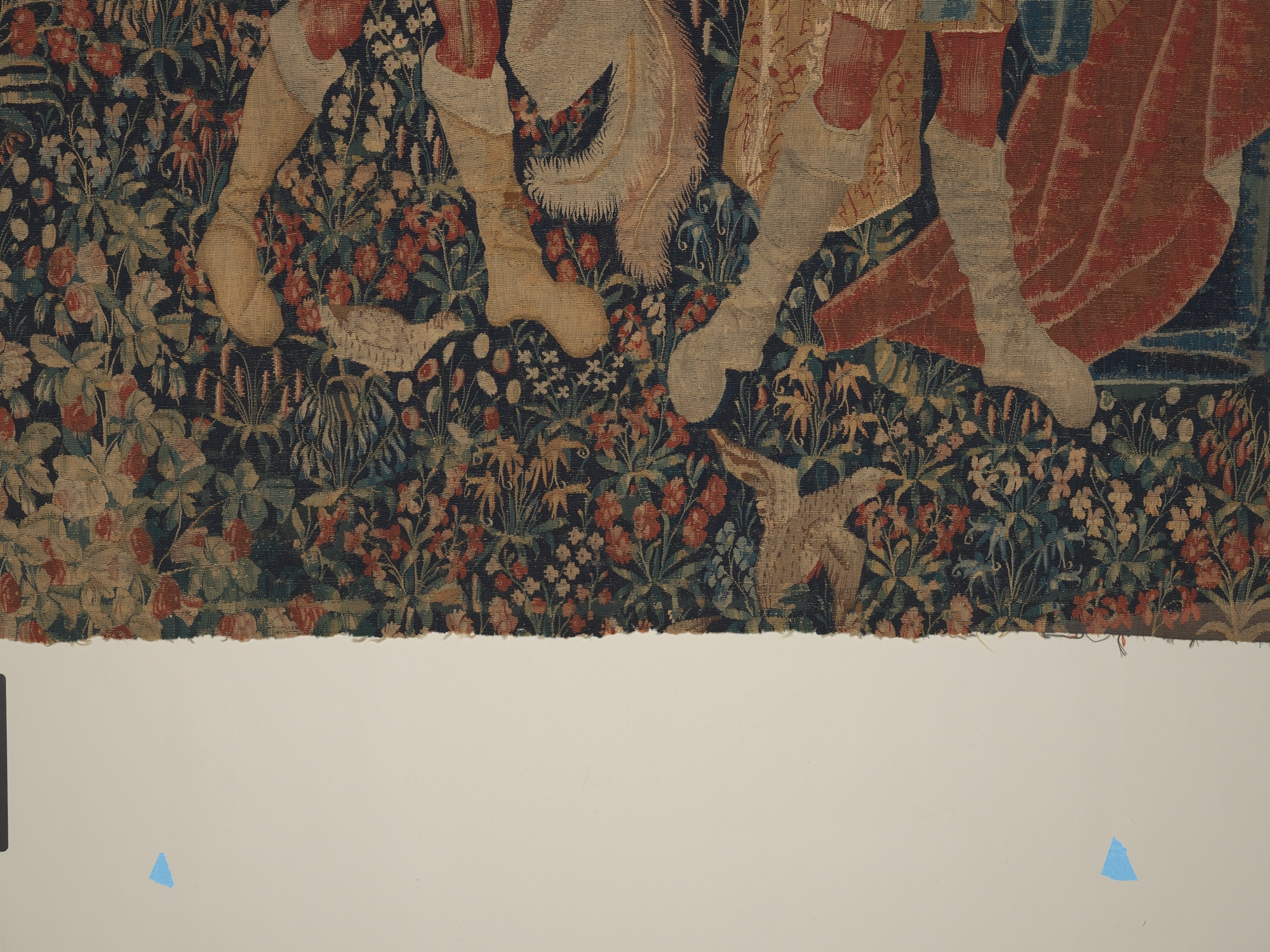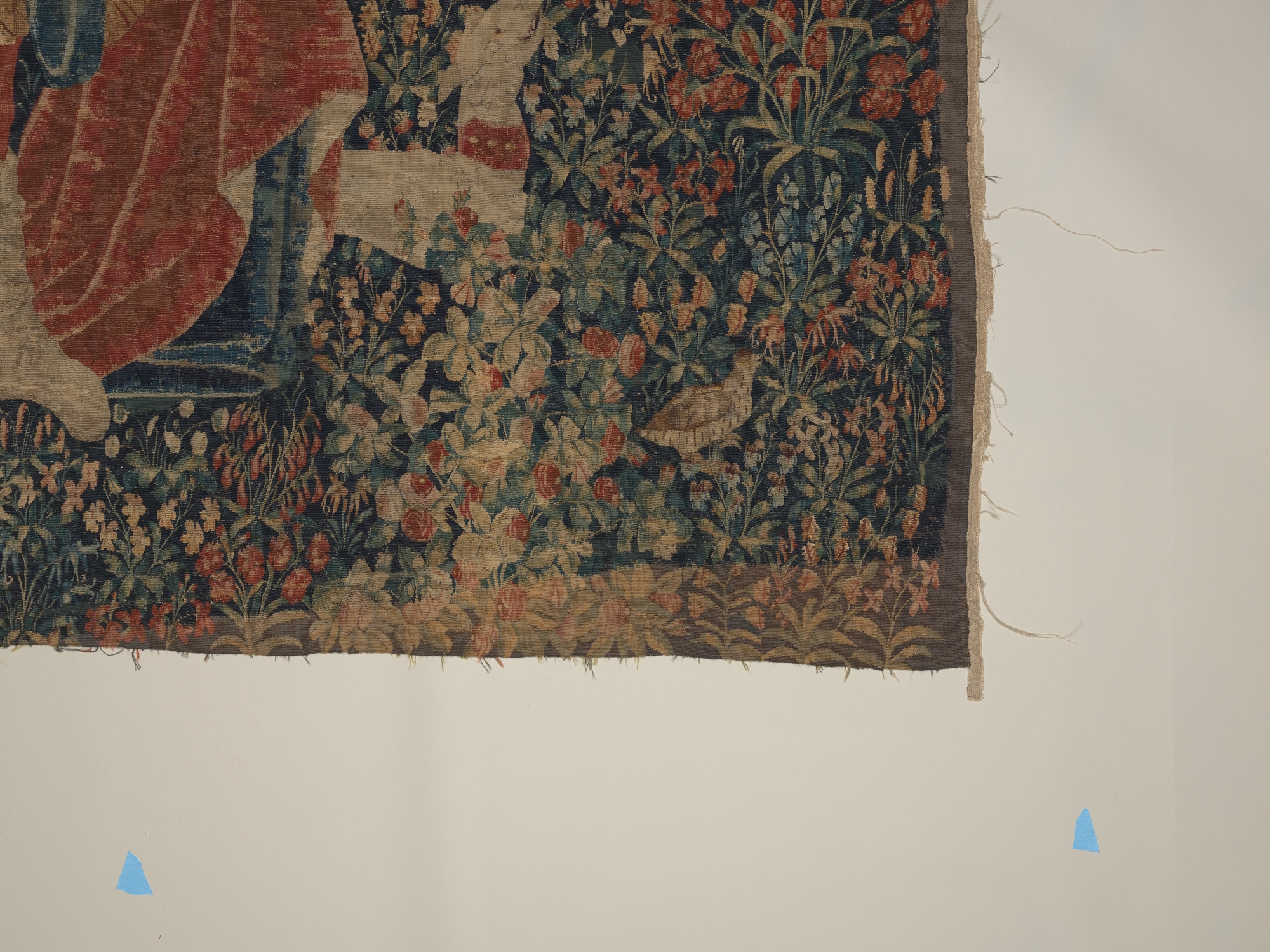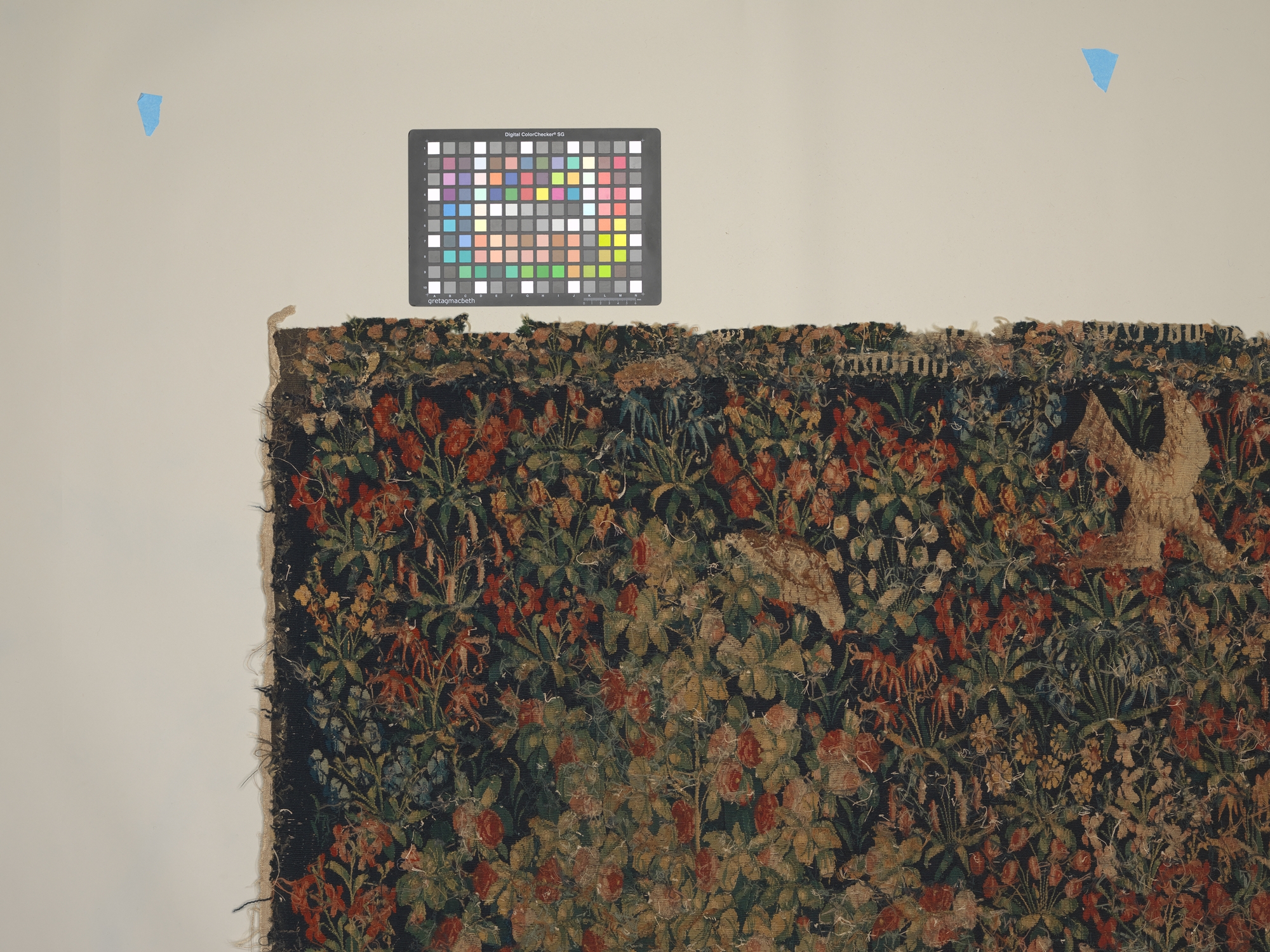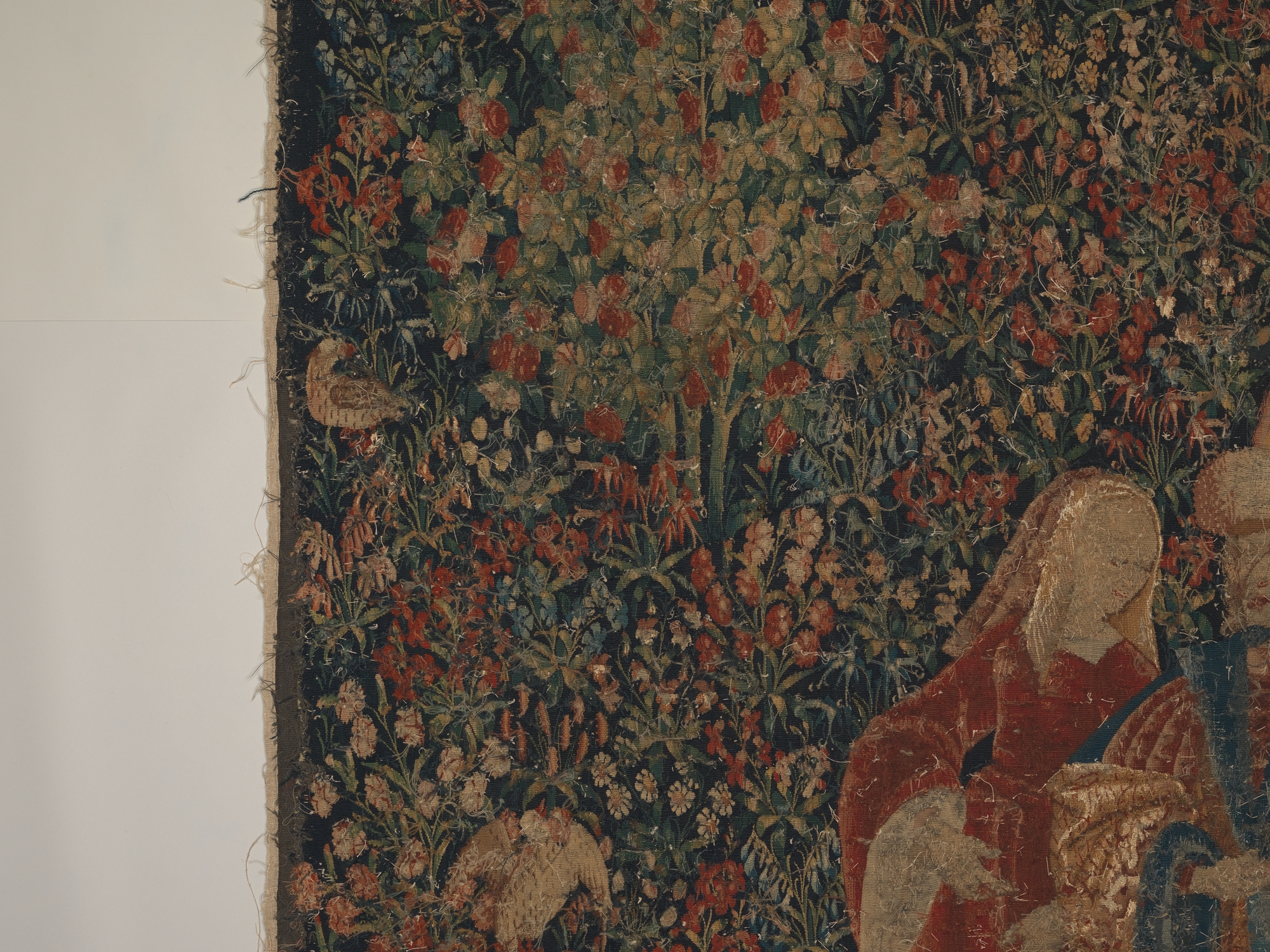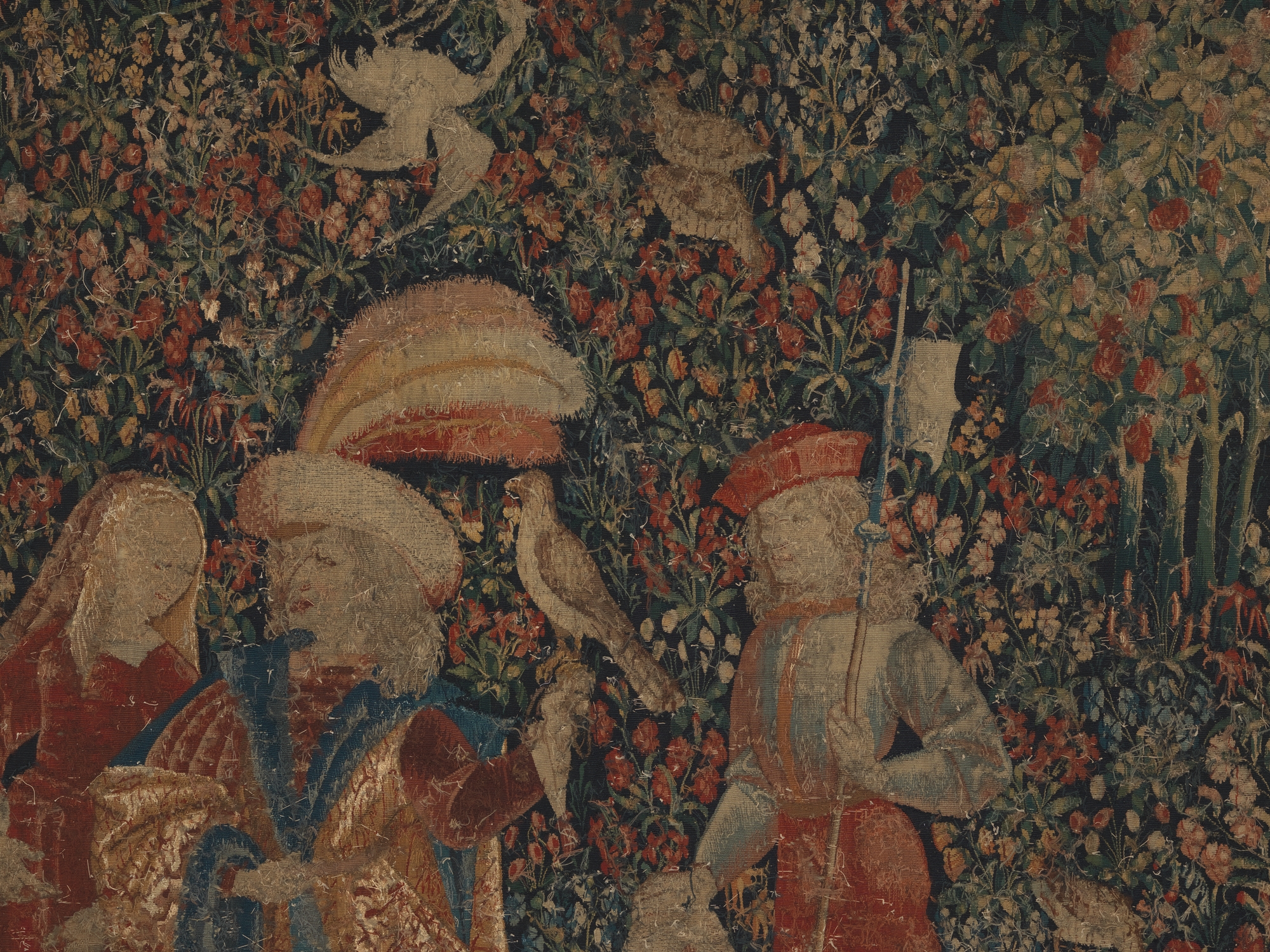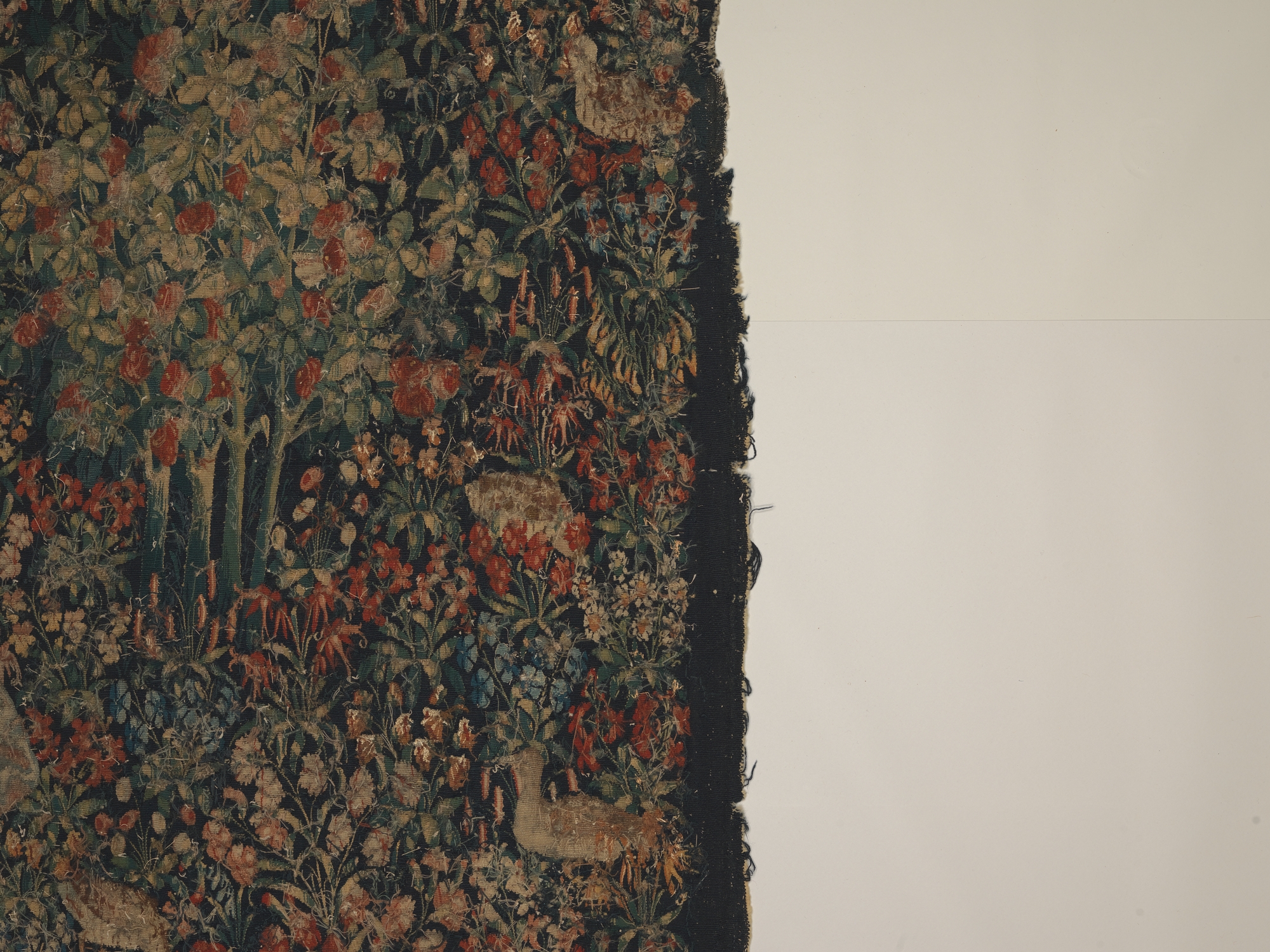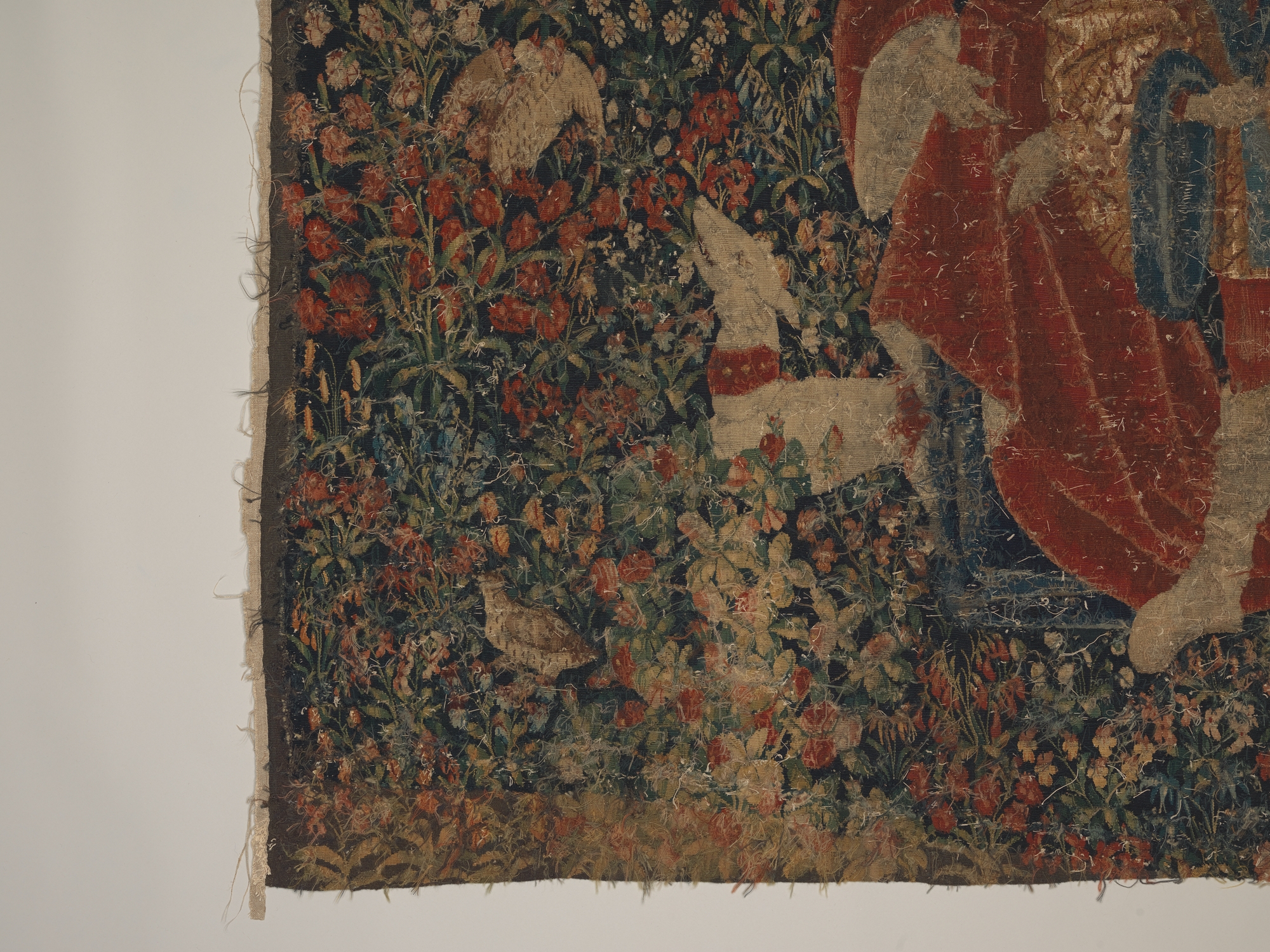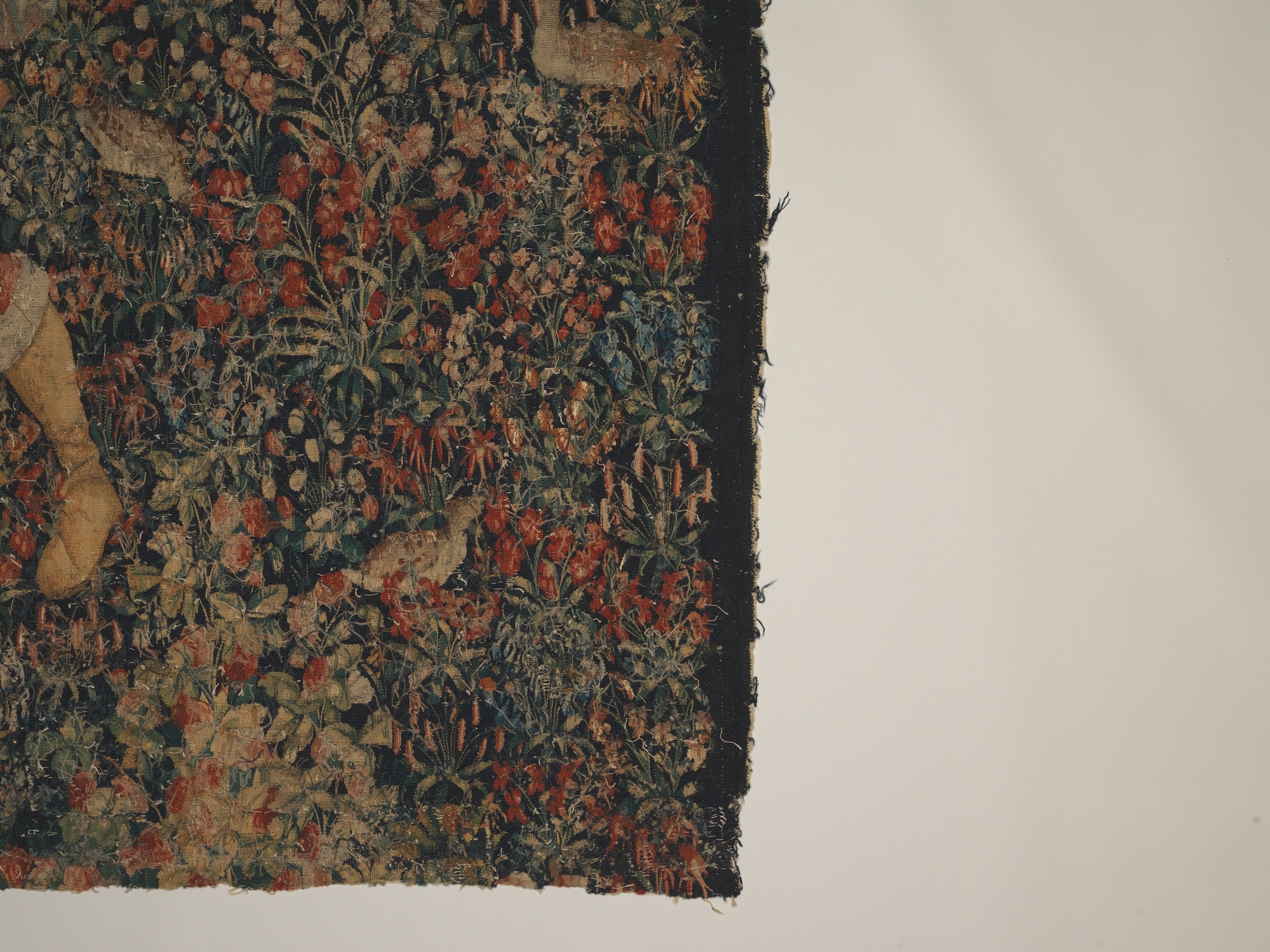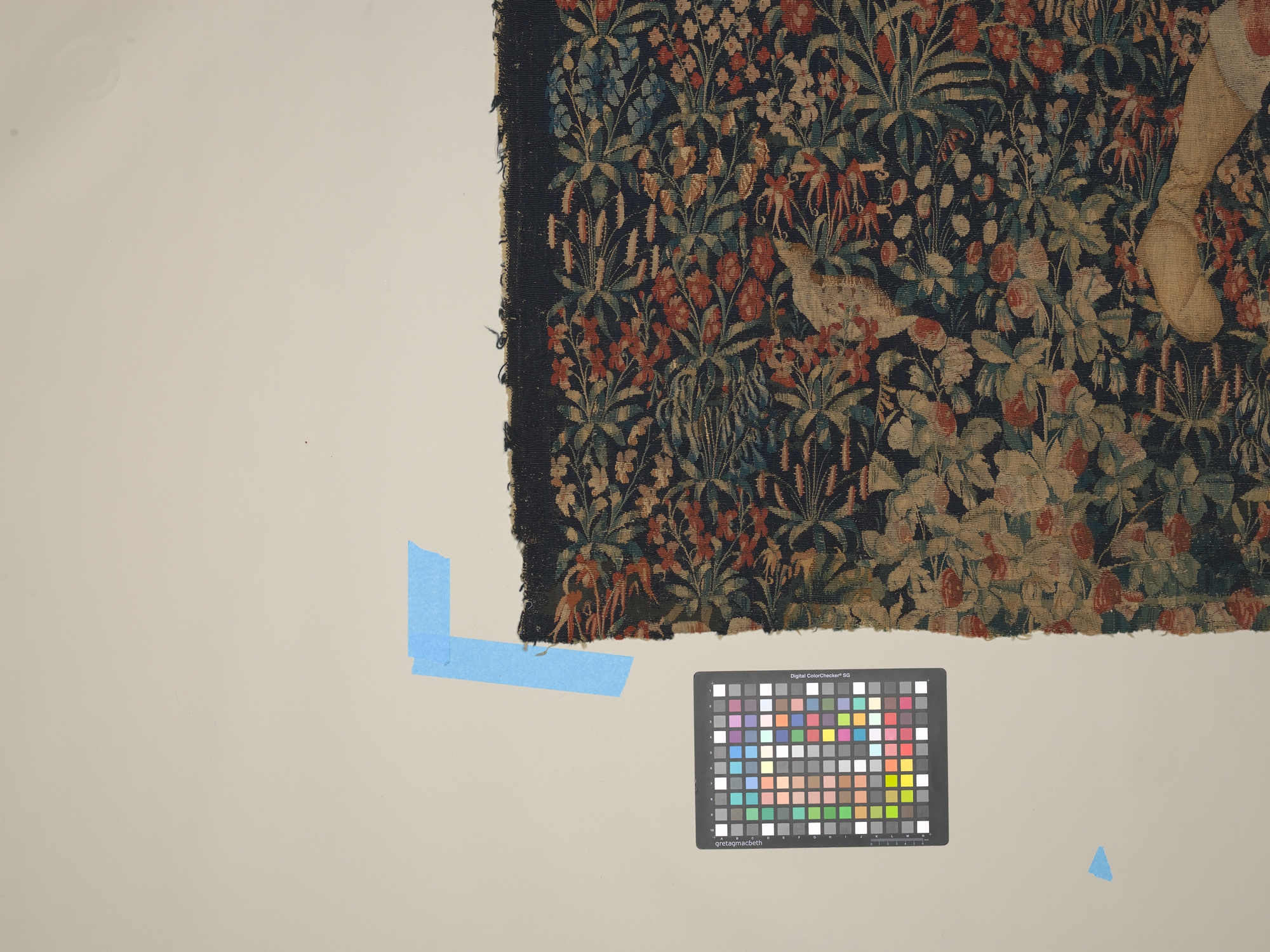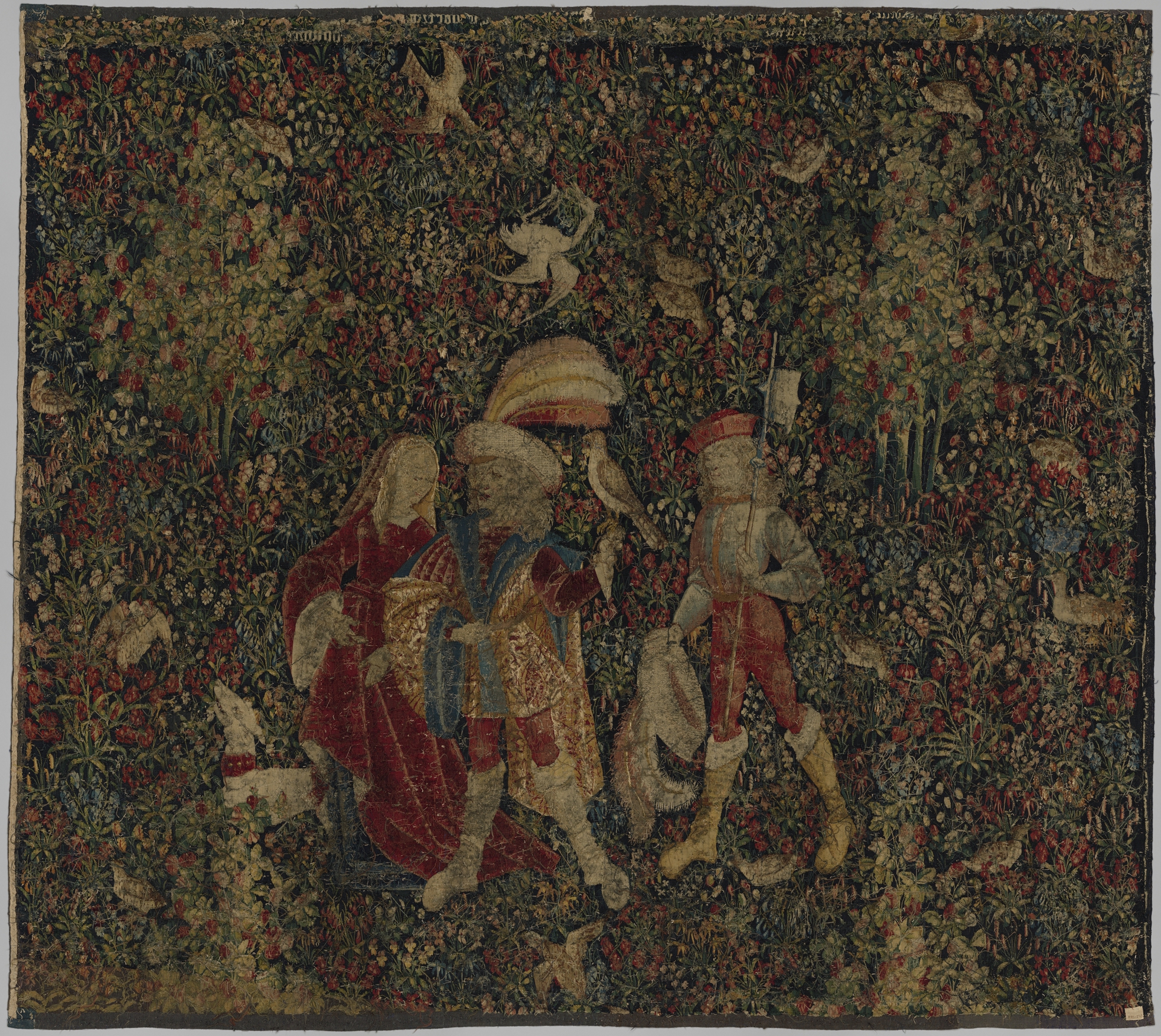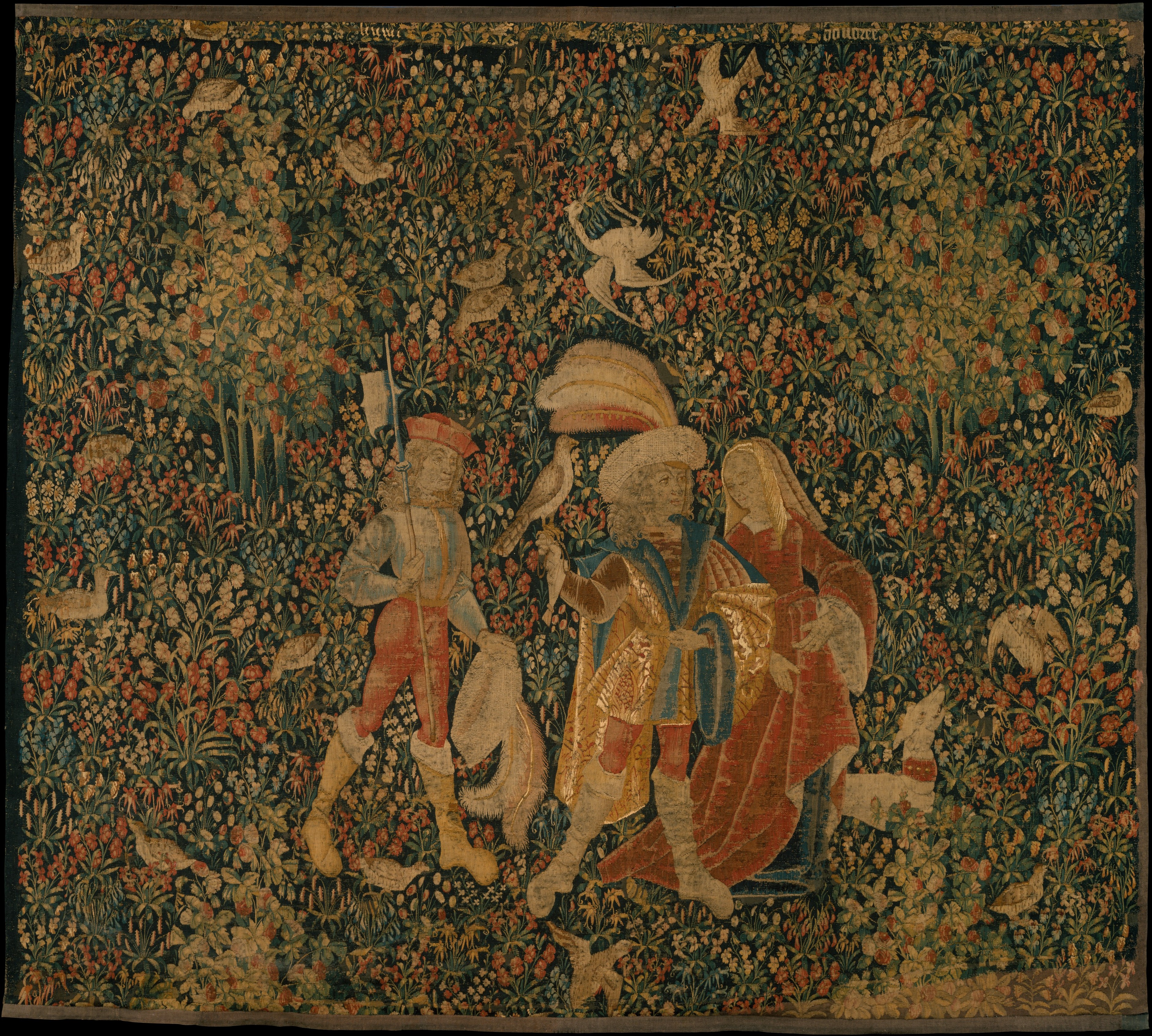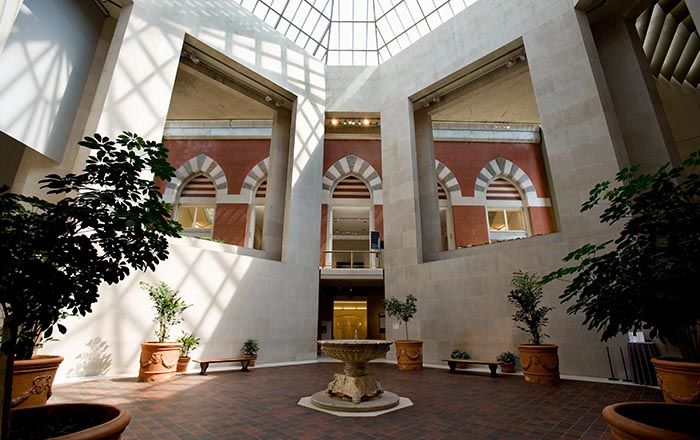The Falcon Hunt
Tapestries with lush floral backgrounds -- known as millefleurs (from the French, meaning "a thousand flowers") -- were popular from about 1400 to 1550 and were produced throughout the Southern Netherlands. Typical of such works, The Falcon Hunt depicts a scene of courtly life—a young nobleman leading a lady and attendant on a hunt. The three figures seem to "float" in space, as the artist paid little attention to creating an illusion of depth. The tapestry has been trimmed on all four sides, and the tops of the rose bushes on the lower left edge indicate that it must have been a great deal larger than it is today. A strip of fabric from a contemporary tapestry was added along the top at some point in the object’s history.
Due to rights restrictions, this image cannot be enlarged, viewed at full screen, or downloaded.
This artwork is meant to be viewed from right to left. Scroll left to view more.
